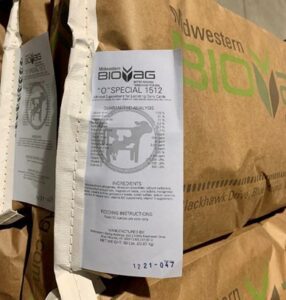Energy
Energy is required for every single biological reaction in the body. Without adequate energy intake, vital organs do not operate properly; cells do not multiply, bones and muscle tissue do not grow, the mammary gland does not produce milk, and reproduction is halted. Energy is essential for maintenance, growth, health, lactation, reproduction, and gestation.

Cattle growth depends on the multiplication and enlargement of cells within the bone, muscle, fat, and organ tissues. Energy is directly required to fuel every single cell function, including multiplication. Energy production is also required for the synthesis of hormones that stimulate cell and tissue growth.
The immune system, as well as any other body process, requires energy to work properly. Animals that do not consume enough energy are highly susceptible to diseases. Energy is required for the synthesis and function of cells and substances associated with cattle health, including antibody production. Energy status also helps determine the success of vaccinations programs; cattle should be inadequate energy status for optimal vaccine response.
The cells within the mammary gland require a significant amount of energy to produce milk. Energy is also fundamental for the synthesis of milk fat, protein, and lactose. However, a cow can mobilize energy reserves to support lactation if energy intake is deficient, although excessive mobilization of reserves is detrimental to reproduction and health.
Energy is the primary nutritional consideration for the optimal reproduction performance of cattle. Energy modulates the synthesis of hormones that control reproduction, such as GnRH, LH, and progesterone. In addition, energy modulates the communication between the fetus and the dam during the initial phases of gestation so the pregnancy can be established and maintained.
Throughout gestation, particularly during the last trimester, the energy requirements of cows increase significantly because of the development of the placenta and fetal growth. During this period, the cow has to consume enough energy to meet her own maintenance requirements and also to support the development of pregnancy (fetus, uterine membranes, and fluids). The demand for energy further increases immediately prior to calving because of milk/colostrum production. Even if a gestating cow does not consume enough energy, she is still able to provide adequate amounts of energy to the placenta/fetus by mobilizing her own energy reserves. However, a cow mobilizing substantial amounts of energy reserves during late gestation may experience calving complications, greater postpartum interval, and health problems.
How do we feed the cow energy? Energy sources for dairy cattle can be broken down into starch, sugar, and fat.
- Starch is the primary source of energy in dairy diets. The source and processing method of starch will determine how it
will be digested in the rumen. Cereal grains such as corn provide most of the starch in dairy cattle diets. Of the energy, improper starch feeding, such as type and amount can have the greatest negative effect on rumen function. Common energy feeds available to cattle are based in high-starch grains (corn, sorghum, barley, wheat), fibrous by-products (soybean hulls, wheat middlings, and beet pulp), or fat sources (oilseeds, animal, and vegetable oils).
- Sugars are readily available to rumen microorganisms. Simple sugars include glucose, fructose, and sucrose. To increase the amount of sugar in the ration, ingredients such as liquid molasses or citrus pulp can be fed.
- Fats come from both plant and animal sources. They are very energy-dense compared to carbohydrates and protein. Unsaturated fat is highly digestible but may reduce fiber digestibility in the rumen compared to saturated fat has less impact on fiber digestion.
Product of the Week: “O” Special 1512
“O” Special 1512 is a complete mineral and vitamin package designed specifically to meet the nutritional needs of dairy cows.
-
-
-
-
-
-
-
- Provides calcium-phosphorus (1:5 ratio), including highly available phosphorus from monosodium phosphate and mono/dicalcium
- Contains sulfate forms of trace
- Meets daily vitamin needs, including Vitamin A, D3, and
-
-
-
-
-
-
View this Bailey’s Bits as a PDF



